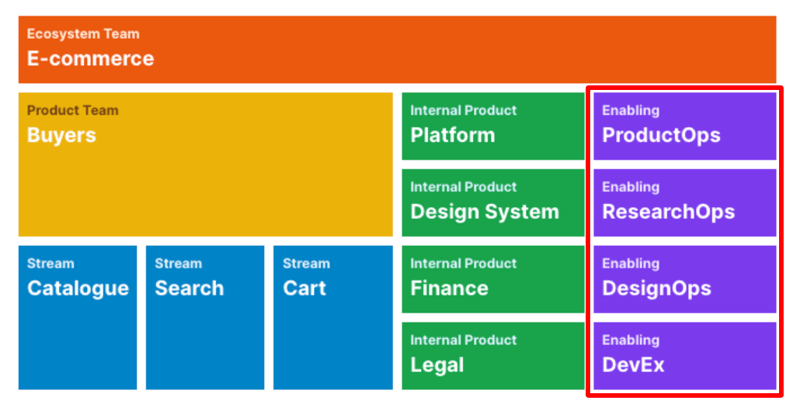- ZeroBlockers
- Archive
- Page 1
Archive
How to Run an Effective Quarterly Planning Session for Empowered Teams
Quarterly planning aligns Product Teams with Stream Teams through collaboration, not control. The Product Team shares their vision and strategy, while Stream Teams determine how to achieve it. This approach preserves team autonomy while ensuring everyone works toward common goals. Done well, quarterly planning enables product teams to focus on impact, navigate dependencies efficiently, and continuously learn. Done poorly, it can result in misalignment, overcommitting, or a lack of accountability.

Repaying the Trust in Empowered Teams
When a team is empowered to decide what to build and when, it requires a huge amount of trust form management. A Product Team stays responsible for the outcomes of the Product regardless of whether they have empowered Stream Teams or not. This delegation of authority represents a significant investment of trust that Stream Teams must actively work to maintain and strengthen.

Communication between Teams is a Bug, Not a Feature
"This wasn't what we expected." The Marketing team stares at the new product dashboard, three weeks past its intended launch date. The Frontend team built exactly what was specified, but the data from the Backend team's API doesn't match their needs. The proposed solution? More meetings. Daily cross-team syncs, weekly alignment sessions, and a new Slack channel for real-time coordination.

The Weekly Product Review: Bridging Team Autonomy and Product Success
Empowering teams requires trust. Stream Teams are given the autonomy to achieve the product objectives they’ve been set, and they are accountable for outcomes rather than just outputs. However, autonomy does not mean operating in isolation - effective product development requires ongoing monitoring to ensure teams are driving meaningful impact. This is where the Weekly Product Review (WPR) comes in.

When Things Go Wrong: The Real Benefit of Empowered Teams
In product development, encountering unexpected results isn't just common – it's inevitable. The true measure of a team's effectiveness lies not in avoiding failures, but in how they respond when faced with disappointing data or failing features.

Navigating the Specialist-Generalist Career Challenge
In cross-functional teams, generalists perform better. Their ability to flex across disciplines, helping out wherever needed, makes them indispensable in modern product development. Yet, when it comes to hiring and promotions, companies overwhelmingly favour specialists. This creates a fundamental tension: teams need adaptable generalists, but individuals must specialise to advance their careers.

Continuous Process Improvement: Beyond Traditional Retrospectives
Retrospectives are meant to drive continuous improvement, but teams often struggle to translate insights into action. The challenges range from lacking the authority to implement changes to having too many ideas and too little time to implement them.

Upskilling on Cross-Functional Teams
The strength of cross-functional teams lies in their diversity of skills and perspectives. However, this same characteristic presents a unique challenge: functional isolation. With typically just one person representing each specialty, if someone lacks proficiency in a critical area, the product suffers. Worse, if the team is unaware of a skill gap, they cannot address it.

How Cross-Functional Teams Work
When you move from a team of functions to a cross-functional team you need to change how the team works because you need to remove any internal handoffs between specialists and shift to a more collaborative way of working. As this is a new way of working, teams are often unaware of the activities they need to perform to work in this new way.

Why We Need Cross-Functional Teams
Andy Grove, famed CEO of Intel, wrote in his book High Output Management: "Speed is the only benefit of cross-functional teams; in all other cases, functional organisations are superior." So if cross-functional teams only have one advantage why should we trade the superior efficiency of functional structures for the less efficient cross-functional structure? Because in a highly competitive and fast changing market, speed is the only advantage that matters.

The Hidden Barrier to Team Empowerment: The CapEx-OpEx Divide
In the push to empower cross-functional teams, one of the biggest challenges isn't technical, cultural, or even organisational—it's financial. Specifically, the division between capital expenditures (CapEx) and operating expenses (OpEx). Understanding CapEx and OpEx and their implications is essential to navigating this challenge and ensuring that teams can truly function autonomously.

The Role of an Enabling Team in the ZeroBlockers Framework
One of the biggest challenges when shifting from a project-based model to a product-based model, is that the different functional experts can become isolated from each other. Instead of working, and often sitting, together, functional experts are scattered across multiple teams. Left unresolved it can lead to a drop in functional knowledge, performance and ultimately product success. Enabling teams can plug this gap.












